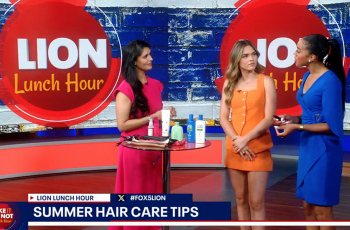It's important to see your eye healthcare professional regularly to help avoid or reduce vision problems.
Common eye problems include blurred vision, halos, blind spots, and floaters. Blurred vision refers to the loss of sharpness of vision and not being able to see small details. Blind spots, called scotomas, are dark "holes" in the visual field in which nothing can be seen. Floaters are small bits of protein or other material that drift in the clear gel-like part of the eye. These problems can be from damage to the eye itself, a condition of the body like aging or diabetes, or a medicine.
Don't wait
Often, people with vision problems wait far too long before getting an eye exam. If you have any change in vision, have it checked out by an eye care professional. Only an eye healthcare professional can identify serious vision problems, like glaucoma or diabetic retinopathy, at a stage early enough to treat.
Symptoms to watch
The following symptoms, even if they are temporary, mean you should see an eye care professional right away:
- Red, painful eye or pain in an eye is an emergency
- Partial or total vision loss in one or both eyes
- Double vision
- Blind spots, halos around lights, or areas of distorted vision
- Feeling of a shade or curtain being drawn across your field of vision
- An injury to the eye or the bone surrounding the eye
These symptoms mean you should see an eye care professional soon:
- Trouble seeing objects on the sides of your visual field
- Trouble seeing at night or reading
- Objects are less sharp
- Trouble telling the difference between colors
- Blurring of objects that are far away or near
- Itching or fluid from your eye
Vision care
Everyone should have a regular dilated exam every year or two, and a dilated exam annually after age 60, according to the American Optometric Association (AOA). Between routine visits, you can take these essential steps which may maintain or improve your vision:
- Eat at least 5 servings daily of fruits and vegetables.
- Don’t smoke.
- Take regular breaks while doing computer work and other tasks that mostly involve your eyes.
- Wear your glasses. This sounds obvious, but many people with low to moderate vision loss leave them at home or tucked in a pocket or purse because of vanity or forgetfulness.
- Wear sunglasses when out of doors. Wear sunglasses that protect your eyes from UVA and UVB rays. Wear them even on cloudy days.
- Closely follow the recommended schedule for cleaning and wearing contact lenses.
- Know your family's eye history and share this information with your healthcare providers.
- If you have high blood pressure, high cholesterol, or diabetes, make sure these conditions are under control.
What to do
Specific vision problems can benefit from specific solutions, according to the AOA:
-
Sensitivity to bright light. Choose sunglasses that block 75% to 90% of visible light. In addition, sunglasses that block 99% to 100% of ultraviolet A and B radiation help protect against cataracts. Choose sunglasses that also block the blue wavelengths. Don't wear dark glasses at night or indoors. Doing so can make eyes more light sensitive over time.
-
Itchy, burning or red eyes. These symptoms can result from dry eye conditions common after age 50, or from high mucous production in allergy-prone contact lens wearers. Using artificial tears may help with dry eye. Some allergy sufferers can get some help from switching to disposable or daily wear lenses. Contact lens wearers and adults older than 50 with these symptoms should consult an eye care professional for appropriate treatment.
-
Trouble with glare. If nighttime headlight glare is an ongoing problem or if you work in visually demanding situations, ask your eye care professional about antireflection-coated lenses. These can help reduce glare and reflections both day and night. Remember, for older adults, an increased sense of glare may be a symptom of beginning cataracts and a reason to get an eye exam.
-
Reduced vision in aging eyes. In addition to a new eyeglass lens prescription, a helpful measure for older eyes is to place more lamps in the home and install task lighting. Choose high-output fluorescent bulbs to increase light output while decreasing energy usage. Eliminate glare with indirect lighting.
-
Problems with new glasses. If, after a few days of wearing new lenses, you continue to have blurred vision, double vision, or other problems, see your eye care professional. The problem may be solved by an adjustment to either the frame or the prescription.
-
Annoying spots in front of your eyes. Generally, seeing spots or floaters is a common, harmless experience of aging. Seeing flashes, or, in some cases "floaters," however, may signal something more serious like diabetic retinopathy, carotid artery disease, or early-stage retinal detachment. Call your healthcare professional if you have symptoms.
Schedule an Appointment
If you think you are experiencing any eye issues and would like to see one of our ophthalmologists. Click here to schedule an appointment, or call (202) 741-2800.



